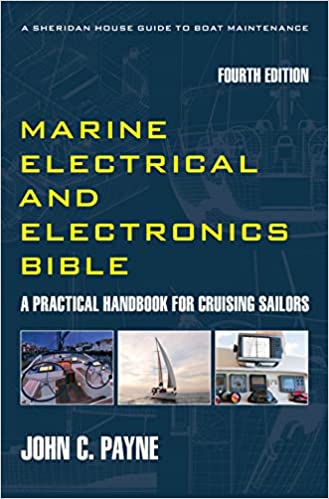Marine High Output Alternator
Installing a marine high output alternator. When you decide on that long cruising voyage there will always be issues around alternator charging and problem. The issue always revolves around battery charging.
The decisions to install a higher output alternator also are part of the fast-charge boat regulator decision making process. When purchasing a new sailing yacht chances are the engine will have an alternator of around 70 to 80 amp rating. Some are now increasing the rating.
A boat buyer is always hopeful there is a retro-fitted marine high output alternator along with a fast charge regulator, and the hopes the batteries are also in good condition and the previous owner has worked out the charging bugs from the system. But not always the case.
The marine high output alternator designation really has shifted to one that is rated output in triple figures, 100 amps plus but typically around 130-150 amps and up to 200 amps or more.
Marine High Output Alternator
Marine high output alternators are often touted as a solution to many charging problems, however they must be placed into true perspective. Many falsely believe they are the answer to charging problems, however they are just part of any solution.
The high amp alternator will effectively increase available charging capacity, and when a fast charge boat regulator is used they can offer significant advantages. These advantages however are directly related to the use of larger capacity battery banks, and the use of batteries with high charge acceptance rates such as AGM's and Gel Cells and now Lithium Ion batteries.
An additional advantage is the increased current availability for powering windlasses and thrusters which are normally used with the engine running and this significantly improves performance, something cruising yacht owners should note when considering fleet reliability.
An added economic advantage is that the extra load will also put more load on the engine and this results in reduced maintenance along with the shorter run times for charging. Again a cost saving for both the average cruising sailboat owner and this also increases reliability
Marine High Output Alternator
In the majority of cruising yachts have standard engine supplied alternators. When used with fast charge boat regulators they often run at maximum temperatures, at least at the start of the charging cycle. An additional effect is where maximum charging currents are demanded along with onboard electrical loads that exceed the maximum output ratings.
The immediate effects are an increase in losses through heat, and on some installations you cannot touch the alternator casing, and this will result in a serious reduction in efficiency and possible burnout. This is compounded by poorly ventilated engine compartments so common on many cruising yachts. The real long term alternator problem and subsequent alternator test and alternator repair problems are the subsequent stressing and degrading of the alternator winding insulation values, which leads to premature failures, and the overheating of bearings with degradation of lubrication. Have seen many bearing failures over the years.
Diode failures are also a possibility with the inability of the heat sink to dissipate heat properly. This also raises expensive alternator part and alternator service availability issues for many boat engine alternators, usually its cheaper to put in a new alternator.
Marine high output alternators work much the same as standard units, with some of the parameters modified in the design and construction. The first change is the reduced cut-in speeds, with alternators wound to produce cut-in at much lower speeds. Similarly maximum outputs are available at much lower speeds which more correctly matches normal engine running speeds on boats. Water cooled alternators are not seen on many boats yet, however this is inevitable with the eventual introduction of 42 volt high power high output alternator.
High Output Alternator
While the marine high output alternator should run cooler manufacturers sensibly use high temperature sealed bearings. Makers also up-rate diodes to higher voltages to provide some protection against spike damages, and these are mounted on more efficient heatsinks. Cooling is also generally up-rated with improved cooling fans to increase efficiency and reduce losses. As most high amp alternator manufacturers offer isolated ground units, always select this option.
Many cruising yacht owners could reap real reliability gains by installing an up-rated negative cable direct to this terminal back to the battery will take the engine out of the circuit improving reliability and reduce circuit losses. See elsewhere about this measure.
Double pulleys are essential on high output machines, and belts must be correctly tensioned if good energy transfer is to take place. While manufacturers offer models as direct replacements for most alternators, you will have to verify that the additional mechanical side loads applied by installation of the dual pulleys is acceptable. I have found that some engine manufacturers do not like this, citing possible bearing damage, so check up before installing. More marine high output alternator information and more about boat charging.
